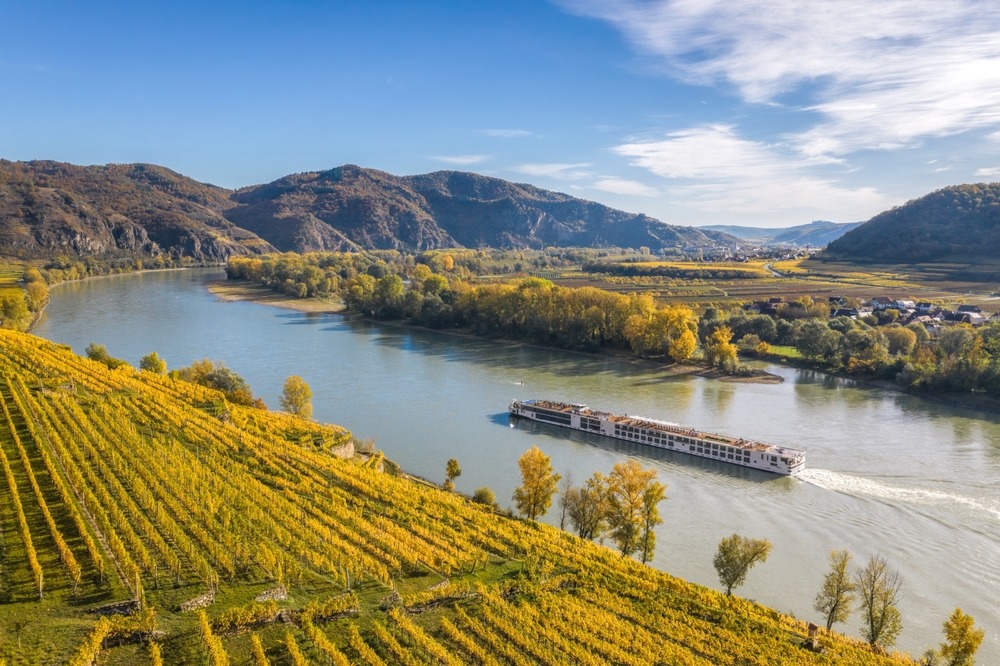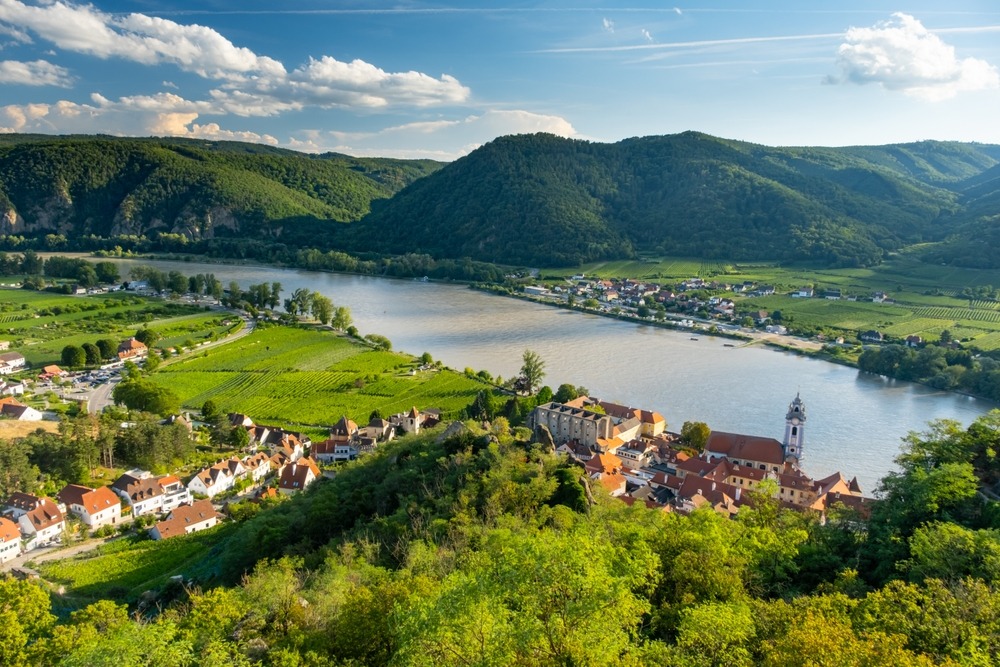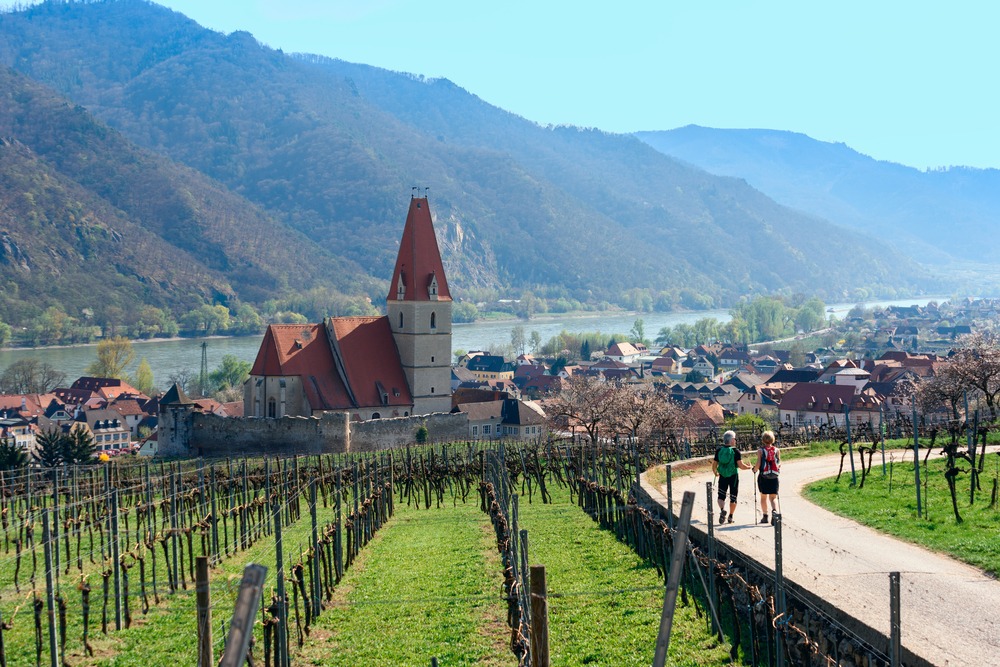Weissenkirchen | Weißenkirchen in der Wachau, Austria: A Historical and Cultural Guide

History of Weissenkirchen in der Wachau
Weissenkirchen in der Wachau (meaning “White Church in the Wachau”) is a postcard-perfect market town nestled along the northern banks of the Danube River, midway between Melk and Krems in Lower Austria. Part of the Wachau Cultural Landscape—designated a UNESCO World Heritage Site—Weissenkirchen boasts a history interwoven with wine, religion, and regional power.
Early Origins and Medieval Growth
The first records of Weissenkirchen date back to the 9th century, during the Carolingian era, when monastic holdings and viticulture began to take root in the Danube valley. The name itself refers to the town’s prominent white church, which became both a religious center and a defensive bastion over the centuries. The area was controlled by various ecclesiastical and noble authorities, including the diocese of Passau and the Augustinian monastery of Dürnstein.
By the 13th century, Weissenkirchen had become a vital trade and viticulture center in the Wachau region. Its location along the Danube made it a key node in river commerce, while its steep terraces proved ideal for producing Grüner Veltliner and Riesling wines—varietals that the Wachau is internationally known for today.
The Fortified Church and Turkish Raids
A key period in Weissenkirchen’s history came during the 15th and 16th centuries, when the town fortified itself against Turkish incursions and regional conflicts. The Parish Church of Weissenkirchen was reinforced with defensive walls and towers, making it a Wehrkirche—a fortified church used as a refuge for the local population. The robust structure still dominates the skyline today.
Baroque Prosperity and Wine Culture
In the 17th and 18th centuries, Weissenkirchen prospered under the Habsburgs. The monastic orders continued to influence viticulture, and Baroque architecture blossomed throughout the region. Wealthy vintners and merchants built ornate homes that still line the town’s narrow cobbled streets.
Modern Era and UNESCO Recognition
The 19th and 20th centuries brought modern infrastructure to Weissenkirchen but left its medieval layout largely intact. After World War II, the town gradually evolved into a tourist destination focused on heritage preservation, wine tourism, and cultural celebration. The 2000 designation of the Wachau Valley as a UNESCO World Heritage Site reinforced Weissenkirchen’s commitment to sustainable tourism and historical conservation.

Top 25 Attractions in Weissenkirchen in der Wachau
-
Parish Church of Weissenkirchen (Pfarrkirche Mariä Himmelfahrt) – A stunning Gothic church dating back to the 14th century, fortified with towers and walls to protect the town during Turkish raids.
-
Teisenhoferhof – A late Gothic building complex housing the Wachau Museum, featuring exhibits on local viticulture, folklore, and medieval life.
-
Wachau Museum (Wachaumuseum Weißenkirchen) – Located in the Teisenhoferhof, this museum offers a deep dive into the cultural, religious, and viticultural history of the Wachau.
-
The Danube Promenade (Donaupromenade) – A scenic riverwalk offering sweeping views of the Danube, passing vineyards, and historical buildings.
-
Wachau Wine Trail (Weinwanderweg) – A marked trail through terraced vineyards, with explanatory signs and scenic overlooks. Ideal for wine-lovers and hikers alike.
-
Kellergasse (Wine Cellar Lanes) – A historic street where traditional wine cellars, some centuries old, offer tastings of local Wachau wines.
-
Weissenkirchen Town Square – The heart of the old town, surrounded by charming inns, cafés, and Renaissance buildings.
-
Fortification Walls and Towers – Sections of medieval defense walls still surround parts of the church and old town.
-
Historic Vintner Houses – Half-timbered and stone homes with date-stones and coats of arms reveal the town’s prosperous wine-trade past.
-
Wachau Cultural Landscape Viewpoints – Several elevated spots, like the Seekopf Viewpoint, offer panoramic vistas of the Danube valley and vineyards.
-
Schiffstation Weissenkirchen – The local dock where river cruise ships stop, allowing visitors to explore the town and surrounding valley.
-
Boat Tours on the Danube – River cruises departing from Weissenkirchen explore the Wachau and nearby towns like Dürnstein and Spitz.
-
Stadtgraben Path (Moat Path) – A narrow walking trail tracing the former town moat, offering unique views of the church and old walls.
-
Heuriger Taverns – Family-run wine taverns where guests enjoy seasonal wines and cold regional dishes in rustic settings.
-
Vineyard Sunset Walks – Twilight strolls through the terraced hills, especially during harvest season in late summer and autumn.
-
Dürnstein Abbey (Nearby) – A short ride away, this ornate Baroque monastery is where King Richard the Lionheart was imprisoned.
-
Spitz an der Donau (Nearby) – Another scenic Wachau village with charming architecture, museums, and wine culture.
-
Ruins of Hinterhaus Castle (Nearby) – Medieval hilltop castle overlooking Spitz and the Danube, offering excellent hiking and views.
-
Marillengarten (Apricot Orchards) – The Wachau is famous for its apricots (Marillen), and local orchards bloom spectacularly in spring.
-
Cycling the Danube Path (Donauradweg) – A paved and well-maintained cycle path linking Weissenkirchen with nearby towns.
-
Wachau Gourmet Festival – An annual culinary event drawing top chefs and wine producers from across Austria.
-
Parish Festival of Weissenkirchen – Held in late summer, this festival combines wine, music, and traditional dance.
-
Advent and Christmas Markets – Cozy seasonal markets held in the town square and wine cellars during December.
-
Wine Harvest Festival (Weinherbst) – Celebrating the grape harvest with music, open wine cellars, and tastings across the Wachau.
-
Local Art Galleries – Small galleries exhibit regional painters and craftsmen who are inspired by the light, river, and vineyards of the Wachau.

Weissenkirchen in der Wachau offers visitors a harmonious blend of natural beauty, cultural depth, and centuries-old winemaking tradition. With its Gothic church, riverside charm, and vineyard trails, the town feels suspended in time—yet entirely alive with music, wine, and celebration. Whether you’re sipping Riesling under a vine-covered arbor or walking through the mists of the Wachau hills, Weissenkirchen delivers an unforgettable experience steeped in Austrian authenticity and scenic wonder.
If you were in fact asking about a location in France, let me know the correct spelling or any nearby towns you remember—I’ll be happy to adjust the article accordingly.

































